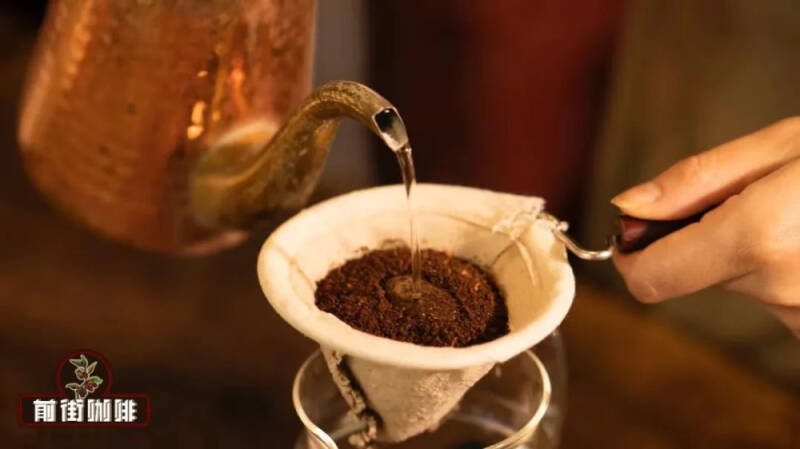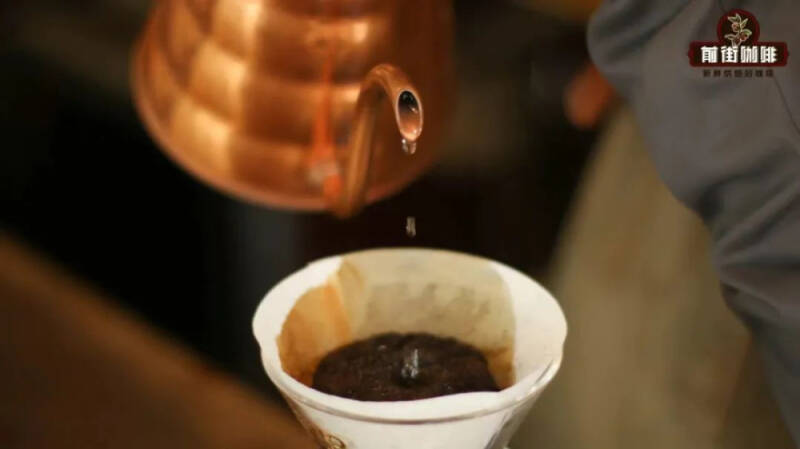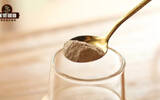What are the characteristics of the pine house style, Kono drip style, and volcanic boiling method? How should I make deep-roasted coffee beans?
Speaking of Japanese coffee, I believe that in addition to the dark and dark roasted coffee beans, the soft and elegant way of filling water is also the impression of Japanese coffee that everyone will think of. Indeed, nowadays, most of the ways of injecting hand-brewed coffee are fast and "rough", because only in this way can we get a rich cup of hand-brewed coffee in the shortest time. Therefore, the slow injection of Japanese cooking is in sharp contrast to it, which will look more elegant and exquisite. Therefore, today Qianjie would like to share some of the most classic brewing methods in Japanese coffee.

Kono style cooking Kono drip method originated in 1973. As its name suggests, it was invented by the Kono family, which founded Kono, a well-known Japanese coffee maker. The Kono family liked deep roasted coffee so much that they took the brewing effect of flannel filter cloth as a reference template to design and invent the Kono filter cup. Then, in order to make the brewed coffee more mellow and refined, the drip method has been developed, which shows their deep love for mellow and deep-roasted coffee.

The reason why this cooking method is called drip method is largely due to the fact that in the cooking process, the first stage of water injection is not the usual injection of hot water, but continuous, well-grained water droplets continue to drip. This action can prolong the steaming time during brewing, so that the carbon dioxide in the coffee is fully released, so that the subsequent hot water can better extract the flavor substances from the coffee. When the filter paper is completely soaked by the coffee liquid (or the coffee liquid filtered by the filter cup has changed from drip to water), it means that the steaming has been completed, and we can change the way of water injection and quickly extract the aromatic substances from the coffee through a large flow of water. (a more detailed introduction to the drip method can be moved into this article, ha → "drip method")
It can be said that pine house brewing is a unique representative of Japanese brewing, because it has three extremely striking characteristics: ultra-long steaming time, high water injection height, and ultra-strong coffee liquid that needs to be diluted with water.
The purpose of steaming for a long time is to make coffee beans with different freshness have the same extraction efficiency; to inject water at an ultra-high position is to make the injected hot water have a precise temperature without a thermometer. The super-concentrated coffee liquid is because under the ultra-high extraction efficiency, the flavor substances can be extracted without too much hot water, so a pot of high concentration coffee liquid can be obtained by raising the ratio of powder to liquid, and finally diluted to your favorite taste through bypass. (friends who want to know more about pine house cooking can move to this article, ha → "pine house cooking")
Volcanic cooking is the most ornamental of the three ways. Because this way will make the coffee powder bed in the brewing process of continuous air, forming a volcanic eruption of the general scene, very spectacular!
Similarly, volcanic flushing also requires muggy exhaust before extraction of flavor substances. But the difference is that the hot water injected during the flavor extraction stage is not injected in one breath, but is divided into several segments, each time the water is injected in a small circle in the middle of the filter cup, a small amount of light injection, and then injected into the next section at an interval of 5 seconds. until the target water is injected. In this process, we can see that the powder bed expands because of the injection of hot water, shrinks because of the penetration of coffee liquid, and then the hot water is injected, re-expanded, re-permeated, re-contracted, and repeated. Because of the high extraction efficiency, the ratio of powder to liquid it uses is also relatively high, so the final extracted coffee liquid will also be a high concentration that needs to be diluted by bypass. (friends who want to know about volcanic thrust can move to this article, ha → "volcanic thrust")
But either of the above brewing methods will be more suitable for deep-roasted coffee beans, because they are all developed around how to extract mellow deep-roasted coffee. If you also like calm and mellow bitter coffee, you might as well try these Japanese brewing methods. I believe that you will get a unique experience when this is different from the usual way of brewing.
-END-
Important Notice :
前街咖啡 FrontStreet Coffee has moved to new addredd:
FrontStreet Coffee Address: 315,Donghua East Road,GuangZhou
Tel:020 38364473
- Prev

What is hand-brewed coffee? Is the harm of instant coffee the addition of vegetable fat powder? Is Aunt Nanjing's coffee making instant?
Everyone must be very familiar with the Nanjing aunt who has recently become popular on the Internet. Her own "hand-brewed coffee" has aroused enthusiastic discussions among netizens because it is quite different from the hand-brewed coffee in our daily understanding. Nowadays, when boutique cafes are mushrooming, hand-brewed coffee refers to a process of making
- Next

The "Allergy Sister" branch claims a refund on the grounds that the taste is not compatible. The store owner: I am not used to it!
▲ Click to pay attention| Daily Boutique Coffee Culture Magazine Coffee Workshop Last month, Wuhan's "Allergy Sister" made most of the coffee circle recognize such a "legendary figure." Recently, a coffee shop owner said that he also encountered a customer who applied for refunds many times, suspected of being an "Allergy Sister Colon." The store owner said that the woman was in her own
Related
- Orange chocolate latte making ratio parameters and formula sharing! Winter special latte milk espresso recommended!
- How does the degree of roasting of coffee beans determine? What is the difference between espresso beans and hand-brewed coffee beans? Is it better to roast Huakui coffee in the medium or lightly roast it?
- How does water injection style affect coffee flavor? How does the size and height trajectory of the water flow used to brew coffee affect extraction?
- Coffee festival booth recruitment translation reward is coffee beans?! Netizen: Golden beans?
- Be careful every word! Starbucks announcement reminds Mixue Ice City fans to clean up garbage!
- Can cheese be made into espresso? How to make a creative special salty cheese latte?
- It has been opened for less than 2 years! Huzhou's first Tims will be closed permanently!
- Chain tea shops collect gifts and are "customized with the same model"! Merchant: I really didn't expect it
- Mocha pot coffee machine coffee grease extraction skills! Is coffee grease or Crema bubbles?
- What is the difference between siphon pot coffee and hand-brewed coffee? What coffee bean parameters and water temperature ratio are appropriate for the siphon pot to make coffee?

